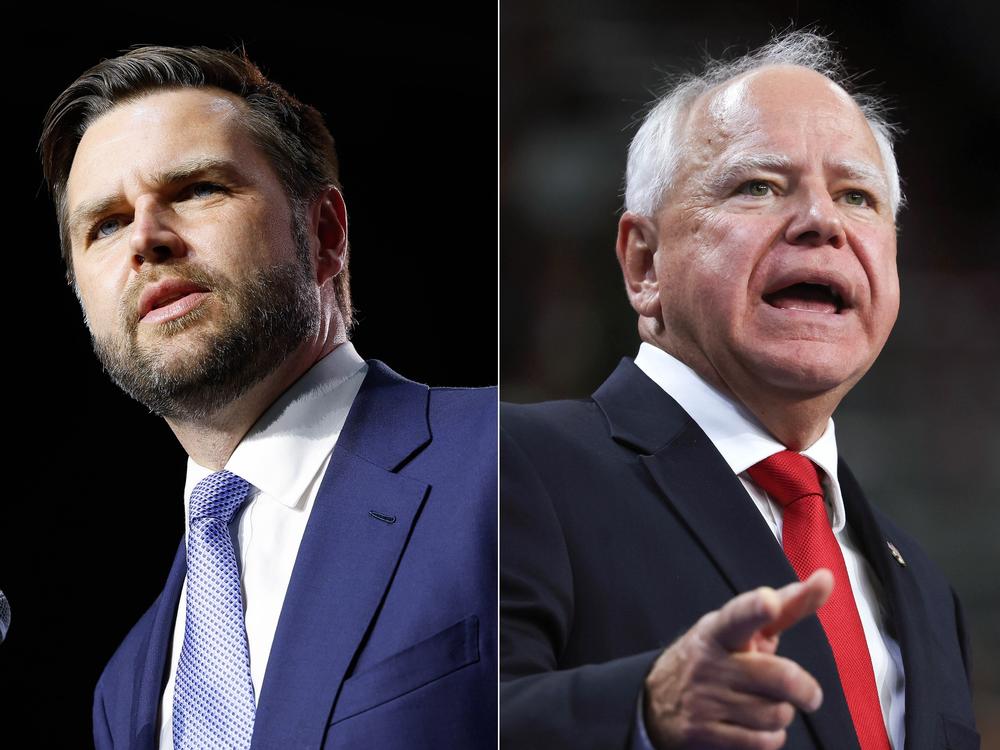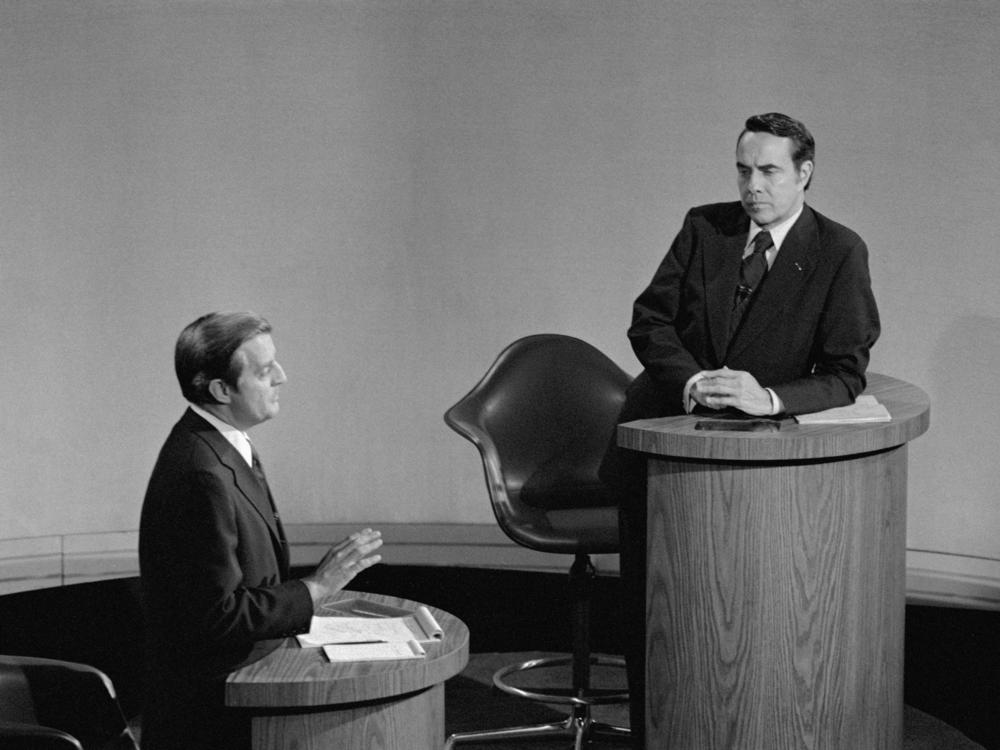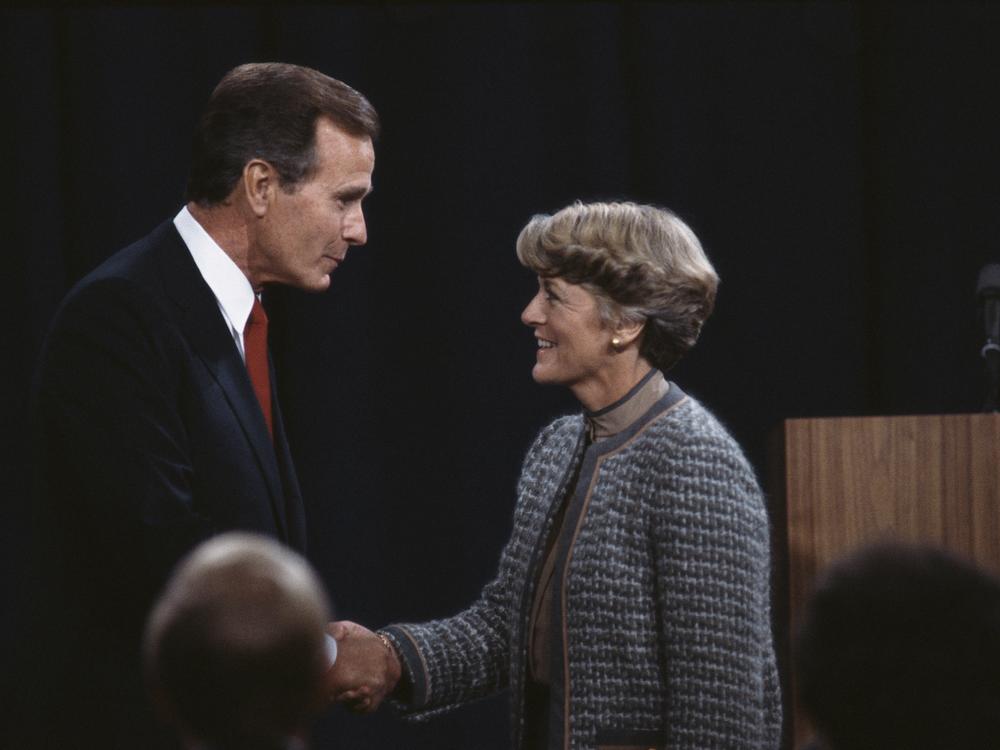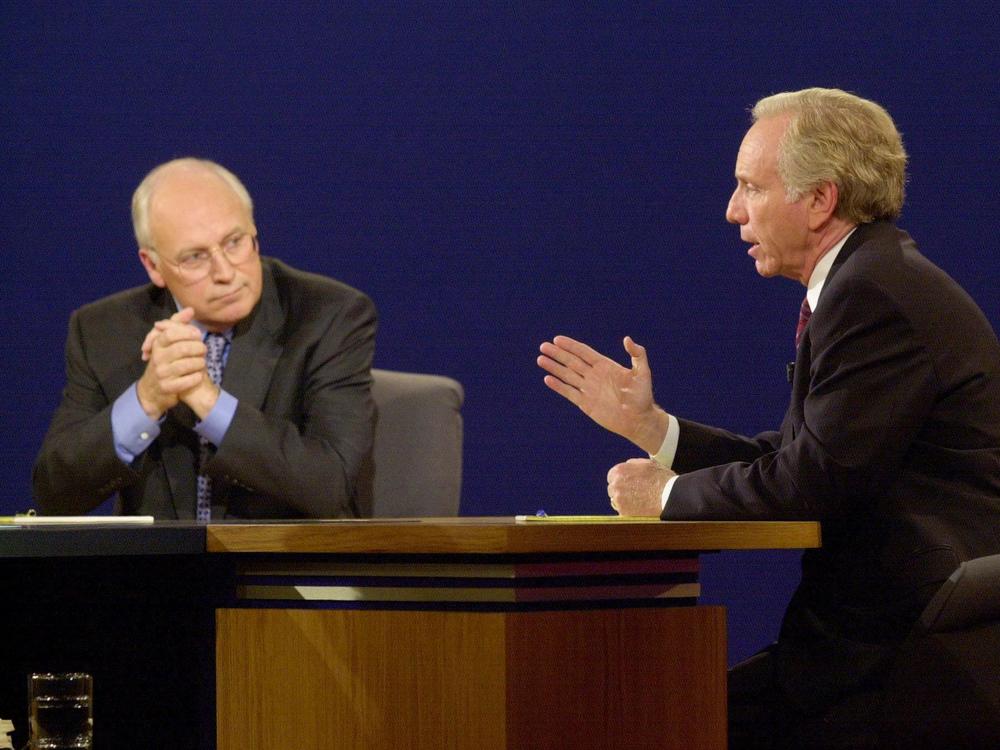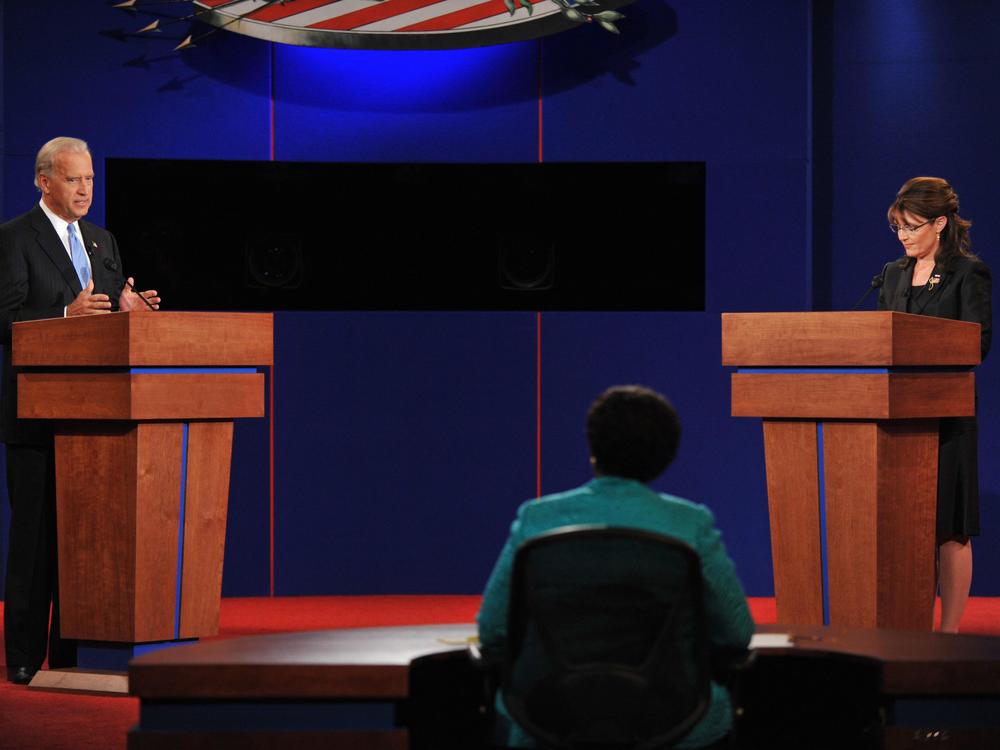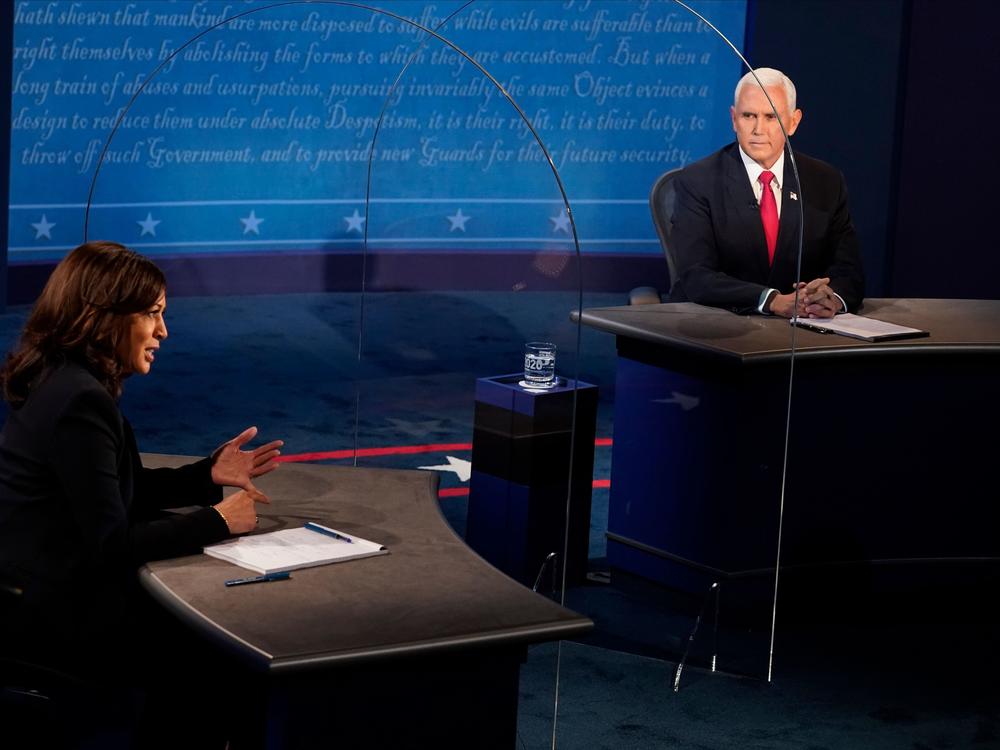Section Branding
Header Content
VP debates may alter a close race’s dynamic even when they don't predict the winner
Primary Content
Vice presidential debates have produced many memorable moments, but it’s hard to say any has made a decisive difference in the election outcome.
This year the anticipation may be higher than in the past, if only because the race is so close and neither candidate seems to have a clear advantage. The debate may provide the moment of decision for some voters and even a tipping point in a closely balanced electorate.
Much of the electorate is still getting to know the running mates chosen by former President Donald Trump and Vice President Harris. Trump’s choice, Ohio’s JD Vance, has only been in the Senate since last year and Harris’ Gov. Tim Walz of Minnesota has not previously campaigned for office outside his home state.
All 11 previous running mate debates have taken place in the month of October, just as the media and campaign aficionados find themselves needing a new angle on the presidential race. They have usually been mixed in with multiple debates between the presidential candidates themselves. But after one meeting with Harris, Trump is saying it is too late for another. So the Vance-Walz debate appears to offer the campaign’s last live confrontation.
That makes this October 1 match in New York seem far more important than the VP’s usual “undercard” status: In boxing terms, it could be the main event of the campaign’s final month. That expectation and tension have hovered over the Battle of the Twos in every four-year cycle for decades now, and it’s worth recalling how much media heat and drama they have generated.
Rewind to the first one
The first vice presidential debate was in 1976, the year of America’s Bicentennial, when the political system needed something to restore people’s faith. The nation was emerging from a decade of dissension, dispirited by the Vietnam War and the Watergate scandals that forced President Richard Nixon from office.
The 1976 presidential contest was between the unelected incumbent Republican Gerald Ford, who had been Nixon’s vice president, and a newcomer named Jimmy Carter, the former governor of Georgia. (Carter will turn 100 on Tuesday, the day of the Vance-Walz debate.)
In that year, both nominees reached out to the disaffected in their own parties with their vice presidential picks. Ford chose Kansas Sen. Bob Dole, a conservative he hoped would placate those who had preferred Ronald Reagan as that year’s GOP presidential nominee. Carter, a Southern moderate, chose the well-known liberal Sen. Walter Mondale of Minnesota. Both men would later rise to the top of the ticket in their respective parties, but neither would ever win the White House.
Their debate in 1976 has been remembered chiefly for a phrase uttered by Dole when talking about foreign policy. A decorated veteran of the Second World War, Dole referred to the several conflicts of the 20th century as “Democrat wars.” Indeed, there had been Democrats in office when each of the world wars and the Korean conflict began, but support for U.S. participation had been generally bipartisan. Dole seemed to be tapping a well of isolationist sentiment long dormant in the GOP – but never extinct.
The Dole controversy lasted a few days and provided videotape for later discussions of his career, but if it did any damage it was hard to discern in November’s outcome. Ford, who had been far behind Carter in the early fall, closed the gap in the closing days and nearly won.
1980 and 1984: Mondale, Bush and Ferraro
In 1980 the VP nominees were Mondale and former congressman and CIA Director George H.W. Bush, the No. 2 for Reagan, who had won the Republican presidential nomination on his third try. The debate was scheduled for Louisville, Ky., on October 2 but canceled three days earlier when both Mondale and Bush declined to attend. There had been disagreements over the inclusion of a third candidate, Patrick Lucey, the former governor of Wisconsin who was the running mate of independent candidate John Anderson that year.
Bush was back as the incumbent vice president in 1984 and game for a debate with the first woman ever included on a major party’s national ticket, Rep. Geraldine Ferraro of New York. Ferraro, a former prosecutor, was poised and assured and gave Democrats a shot in the arm. At one point she took exception to Bush’s dismissive tone: “I almost resent … your patronizing attitude that you have to teach me about foreign policy.”
Mondale was also back that fall, at the top of the Democratic ticket, and having done well in his first debate with Reagan, he took to featuring that performance and Ferraro’s in his campaign appearances. “Have you been watching the debates?” he would ask, and the crowds, such as they were, would roar.
Bush generated a ruckus after the debate when an open microphone overheard him saying he had “tried to kick a little ass.” But none of the back and forth over the debates that autumn could have mattered much Reagan was cruising toward a second term and won every state but Mondale’s Minnesota, where he came within one-fifth of one percentage point.
VP debates’ single greatest hit
Perhaps the best illustration of vice presidential debates elevating a candidate who would still lose in the election Lloyd Bentsen, the silver-haired Texas senator who ran with Democrat Michael S. Dukakis in 1988. Bentsen had the stature in Washington and also the appeal to the heartland that Dukakis lacked. He had also taken the measure of the youthful senator from Indiana whom Bush, now his party’s pick for president, had added to the GOP ticket.
Quayle had been elected to the Senate at age 33 and was just 41 when he faced Bentsen, 26 years his senior. Answering a question about his experience, Quayle said he’d had “as much experience in Congress” as John F. Kennedy had when he was elected president at 43 in 1960.
Bentsen fixed his opponent with an appraising stare as he said: “Senator, I served with Jack Kennedy. I knew Jack Kennedy. Jack Kennedy was a friend of mine. Senator, you’re no Jack Kennedy.”
The crowd whooped. A crestfallen Quayle recovered enough to say: “That was really uncalled for, senator.” But if there had been a referee he would have stopped the fight right there.
Still, in November, the Bush-Quayle ticket carried 40 states and won easily.
No vice presidential debate since then has produced quite such a dramatic highpoint, but there have been several that left an indelible impression.
In 1992, Quayle was back as the incumbent vice president and as Bush’s designated attack dog against the Democratic ticket of Bill Clinton, then governor of Arkansas, and running mate Al Gore, then a senator from Tennessee.
But both Quayle and Gore were upstaged by the presence of a third debater, the only such addition to the format in the history of vice presidential faceoffs to date. He was retired Adm. James A. Stockdale, a hero of the Vietnam War who had been a prisoner of war and an organizer and spokesman for other POWs at the time. Stockdale was the running mate for independent candidate H. Ross Perot, a billionaire businessman who also took part in the presidential debates with Bush and Clinton.
But on debate night, Stockdale looked uncomfortable on stage and had trouble with his hearing aid. His opening -- “Who am I? What am I doing here?” – came across not as introductory so much as genuinely confused. It was fodder for parody and was being mercilessly mocked almost before the debate was over.
Did Stockdale hurt Perot? Not visibly. The Clinton-Gore ticket won in 1992, but Perot-Stockdale got 19% of the popular vote in November, the best showing for a third-option ticket since the 1912 “Bullmoose” heyday of Theodore Roosevelt.
Surprises abound but prove inconclusive
Gore returned in 1996 as the incumbent vice president to debate Rep. Jack Kemp, the vice presidential choice of Dole, who was back as the GOP nominee against Clinton. Gore and Kemp had served in the House together before Gore’s election to the Senate in 1984. Their debate was spirited but cordial, and many Republicans later said their guy should have been more aggressive. In any event, the incumbents won the vote that mattered that November.
In 2000, Gore was at the top of the ticket and surprised many by choosing Sen. Joe Lieberman, a party moderate from Connecticut who had been critical of Clinton. It appeared to be an effort to distance Gore from Clinton, in part because Lieberman had been outspoken in criticizing Clinton for the relationship with a White House intern that led to Clinton’s 1998 impeachment.
Lieberman was the government official in his debate with Dick Cheney, who was at the time the chairman of a private company servicing the oil-and-gas industry. But Cheney had also been in the Republican leadership in the House and been Bush’s secretary of defense during the first Persian Gulf War. He asserted a kind of seniority over his Democratic rival in the debate, even though Lieberman was just a year younger and a sitting senator at the time. If there had been any doubt about Cheney when picked by GOP presidential nominee George W. Bush, such doubt was dispelled in the debate.
A few weeks later, in one of the closest elections in U.S. history, the Bush-Cheney ticket lost the popular vote but squeaked by in the Electoral College thanks to a 537-vote edge in Florida that took five weeks and a Supreme Court Decision to decide.
As the incumbent vice president four years later, Cheney was every bit as much in command when paired with Sen. John Edwards of North Carolina, the running mate choice of Sen. John Kerry of Massachusetts. With the memory of the terror attacks of September 2001 still vivid in voters’ minds, Cheney had an advantage and kept a grip on it, knowing his reputation for glowering toughness fit the moment better than Edwards’ freshness and Southern charm.
That November’s outcome was not quite as close as in 2004, but the early exit polls had pointed to a Kerry-Edwards win. It was only when Ohio went for Bush-Cheney late that evening that the Electoral College had a winner.
Renewed interest in 2008
The atmosphere in the country was notably different four years later in 2008. Feeling the wind at their back as a party, Democrats fought almost all the way to the convention over whether to nominate Hillary Clinton, bidding to be the first woman president, or Barack Obama, bidding to be the first Black president. Obama prevailed and chose a Senate colleague old enough to be his father, Sen. Joe Biden of Delaware, to be his running mate. Biden had connections to the white, working-class voters Obama had been losing in the primaries that year.
And Biden did well in his debate with the Republican running mate, Alaska Gov. Sarah Palin, who had added verve and excitement to the ticket headed by Sen. John McCain of Arizona. While Palin was bound to be the focus of the debate, Biden had opportunities and made the most of them.
At the time, Wall Street was experiencing a crisis over mortgage-backed securities that would trigger a credit crunch and a downturn soon to be dubbed “the Great Recession.” So Biden’s gravitas as a six-term senator was as welcome as his roots in blue-collar America. A month later he was the vice president-elect.
In 2012, Biden’s task was entirely different. Obama’s reelection was opposed by former Massachusetts Gov. Mitt Romney, and Biden found himself onstage with the brainy and capable Paul Ryan, the chairman of the House Budget Committee and almost 30 years Biden’s junior. Ryan had first come to Washington as a congressional intern for Jack Kemp, and like him, he would be criticized for not attacking the incumbent vice president he faced in the debate. In any event, the Biden-Ryan meeting produced no surprises and probably no effect on the Obama-Biden reelection the following month.
This low-impact trend has continued in the last two vice presidential debates. It takes a moment to even remember the 2016 debate between Mike Pence, then the sitting governor of Indiana, and Sen. Tim Kaine of Virginia. Pence had little trouble keeping the emphasis on the man who had put him on that stage, Donald Trump, and on the social issues that Trump wanted him to promote.
Kaine, who had been governor of Virginia and chairman of the Democratic National Committee moving on to the Senate in 2012, also made Trump the centerpiece of his debate performance, saying Trump was “scary” as commander in chief and far too well-disposed toward dictators and authoritarians in other countries.
But a few weeks later, when Trump-Pence had prevailed over Clinton-Kaine, no one was talking about what had happened in the running mates’ debate.
In our own time
Four years later, during the COVID pandemic
Pence’s Democratic rival was Biden’s running mate, Kamala Harris, then a sitting senator from California, who was equally loyal when defending both Biden and herself. And she was not shy about taking on the social issues such as abortion that were so important to Pence’s portfolio.
Just three months later, a crowd of rioters would chant “Hang Mike Pence” and erect a makeshift scaffold on the steps of the U.S. Capitol because Pence had refused Trump’s urging to block the certification of the Electoral College results. Pence refused to leave the Capitol that night and in the wee hours of morning he supervised the process by which the Biden-Harris ticket formalized its win.
Pence also returned to the campaign trail to seek the GOP’s 2024 presidential nomination as an alternative to Trump. Pence took part in several of the debates among the candidates, separating himself from Trump on the question of certifying the 2020 election but otherwise defending the Trump record. Unable to make much headway in polls or amass a competitive war chest, he dropped out months before the first primary was held.
Despite the frustrations of Quayle and Pence, the TV-era tradition by which former vice presidents have gone on to be their party’s presidential nominee is impressive (Nixon, Hubert Humphrey, Ford, Mondale, Gore, Biden and the first President Bush).
And it continues this year with Harris, who will note that four of her seven predecessors in this group made it to the Oval Office.
